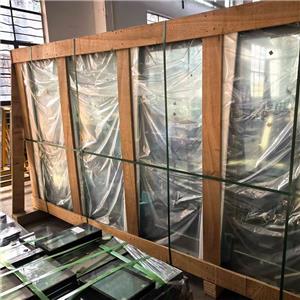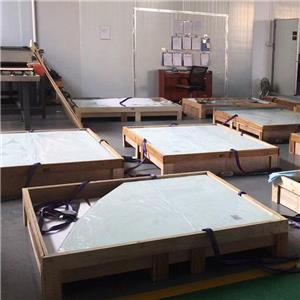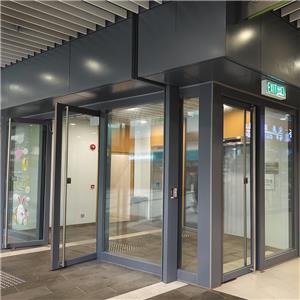The Growing Demand for Fire-Resistant Glass in the Middle East
The Middle East, a region synonymous with rapid urbanization, megaprojects, and extreme climatic conditions, is witnessing a transformative shift in its construction and infrastructure sectors. Among the materials gaining traction, fire-resistant glass (FRG) stands out as a critical component for enhancing building safety and compliance. This article explores the current landscape and predicts the growth trajectory of fire-resistant glass in the Middle East over the next decade, driven by regulatory reforms, infrastructure expansion, and evolving architectural trends.
1. The Middle East’s Construction Boom and Safety Imperatives
The Middle East has long been a hub for ambitious construction projects, from Dubai’s Burj Khalifa to Saudi Arabia’s NEOM megacity. However, high-profile incidents like the 2017 Torch Tower fire in Dubai and the 2022 Kuwaiti residential building blaze have intensified scrutiny on fire safety standards. Governments across the region are revising building codes to mandate fire-resistant materials, particularly in high-rise structures, hotels, hospitals, and public facilities.
Fire-resistant glass, which can withstand flames and smoke for 30–120 minutes depending on its grade, is increasingly replacing traditional glass and even concrete walls. Its dual functionality—maintaining transparency while providing compartmentalization during fires—aligns with both safety and aesthetic demands. Countries like the UAE and Qatar now require FRG in critical escape routes, elevator shafts, and facades of buildings over 40 meters tall.
2. Drivers of FRG Adoption
a. Regulatory Push
In 2023, Saudi Arabia updated its Saudi Building Code (SBC) to align with international fire safety norms, explicitly recommending FRG in commercial and residential high-rises. Similarly, Dubai’s Civil Defence mandates FRG in all new hospitality projects. These regulations are not merely guidelines but enforceable standards, with penalties for non-compliance.
b. Mega-Events and Tourism
Upcoming global events, such as the 2030 Riyadh Expo and the 2034 FIFA World Cup, are accelerating infrastructure development. Stadiums, airports, and luxury hotels under construction in Saudi Arabia, Qatar, and the UAE are prioritizing fire safety to meet international expectations. FRG’s ability to combine safety with sleek design makes it ideal for glass-dominated architectures like Abu Dhabi’s Louvre Museum or Riyadh’s Qiddiya entertainment city.
c. Climate Resilience
The Middle East’s harsh climate—extreme heat, sandstorms, and humidity—poses unique challenges. Modern FRG products are engineered to resist thermal stress and UV degradation, making them viable for external glazing. For instance, solar-control laminated FRG, which blocks heat while maintaining fire resistance, is gaining popularity in office towers across Dubai and Doha.
3. Market Projections: Volume and Value
According to industry reports, the Middle East’s FRG market was valued at approximately 220millionin2023∗∗,withdemandconcentratedintheGCCnations(UAE,SaudiArabia,Qatar,andKuwait).By2030,themarketisprojectedtogrowata∗∗compoundannualgrowthrate(CAGR)of8–10400–450 million. This growth will be fueled by:
Commercial real estate: Office complexes and mixed-use developments.
Healthcare and education: Fire-rated partitions in hospitals and schools.
Transportation hubs: Fire-safe glass in airports and metro stations.
Saudi Arabia is expected to dominate regional demand, accounting for 40% of the market by 2030, driven by giga-projects like NEOM and the Red Sea Development. The UAE and Qatar will follow closely, with Dubai’s focus on luxury tourism and Qatar’s post-World Cup urban expansion.
4. Challenges and Innovations
a. Cost Sensitivity
FRG costs 3–5 times more than standard glass, posing a barrier for budget-conscious developers. However, economies of scale and localized production could mitigate this. Companies like Emirates Glass (UAE) and Guardian Glass (Saudi Arabia) are investing in regional manufacturing to reduce import dependency and costs.
b. Technical Adaptation
Not all FRG products suit the Middle East’s climate. Suppliers must innovate to address issues like sand abrasion and thermal expansion. For example, Germany’s Schott AG has introduced hybrid FRG with ceramic interlayers for enhanced durability, while China’s Kibing Group offers tempered FRG with self-cleaning coatings.
c. Awareness and Training
A lack of expertise in installing and maintaining FRG remains a hurdle. Regional governments are partnering with firms like Saint-Gobain and AGC to train contractors and architects on FRG specifications.
5. The Road Ahead: Sustainability and Smart Technologies
Future demand will also hinge on sustainability. Low-carbon FRG made with recycled materials aligns with the UAE’s Net Zero 2050 pledge and Saudi Arabia’s Circular Economy Initiative. Additionally, integration with smart building systems—such as FRG embedded with sensors to detect heat or smoke—could redefine fire safety protocols.
Conclusion
The Middle East’s fire-resistant glass market is poised for robust growth, shaped by regulatory rigor, architectural ambition, and climate adaptability. While cost and technical challenges persist, innovation and localization strategies will unlock opportunities. As the region continues to build upward and outward, FRG will transition from a niche safety product to a mainstream construction staple—ensuring that the Middle East’s skyline remains as safe as it is spectacular.
By 2030, fire-resistant glass will not only be a compliance requirement but a symbol of the region’s commitment to resilient, future-ready urban landscapes.







